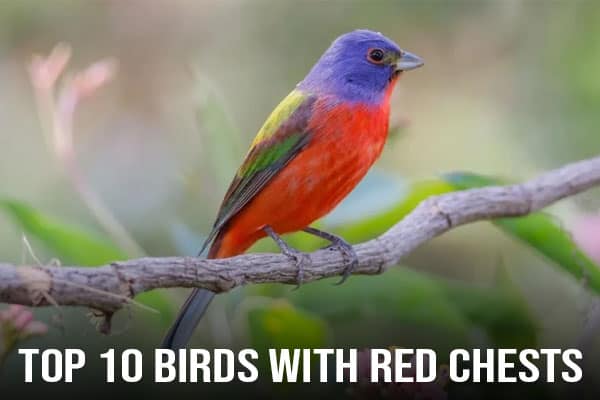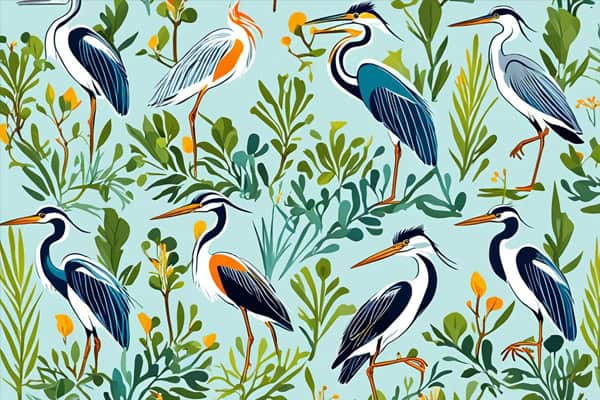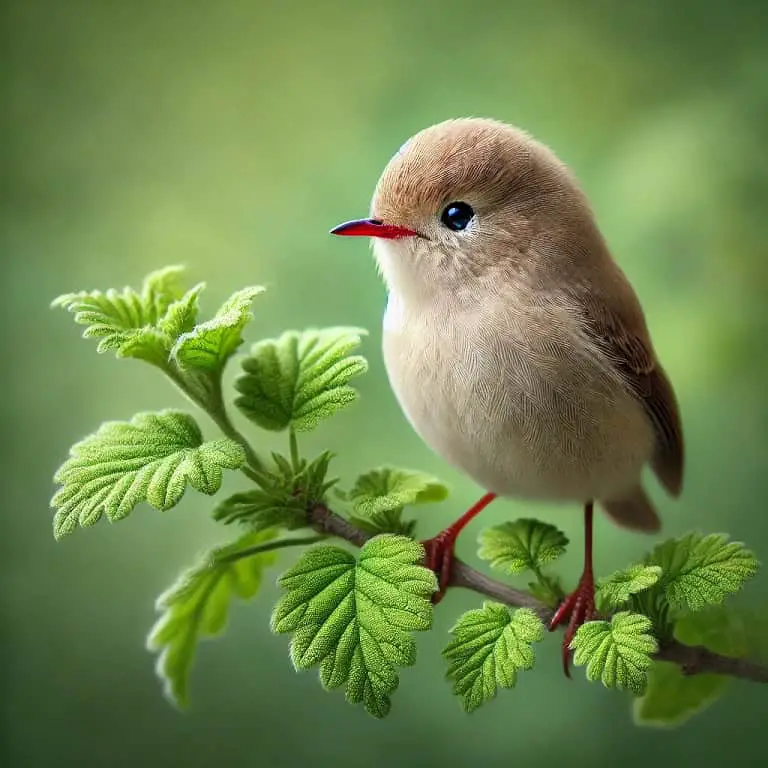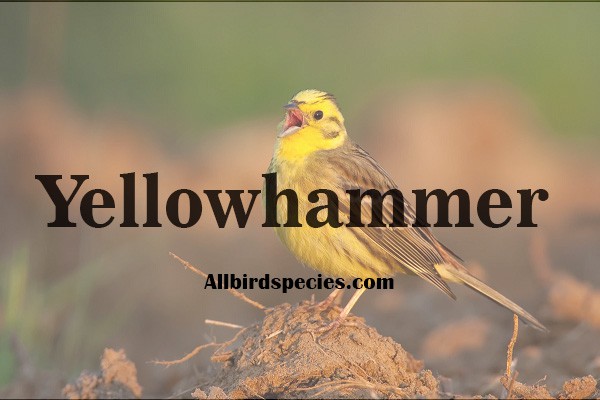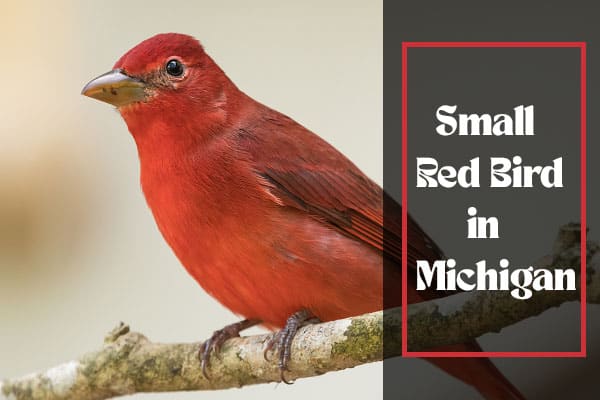Top 10 Birds With Red Chests (ID Guide With Pictures)
Are you fascinated by the bright red chests of birds? These birds are truly a sight to behold, from the scarlet tanager to the house finch. Let’s dive into 15 amazing species known for their red chests. We’ll look at their unique traits, where they live, and how they act. Get ready to be amazed by their vibrant colors and charming nature.
Learn About Top 10 Types of Birds With Red Chests
Some bird species have red chests that play key roles in their lives. These colors help them find mates, recognize each other, and keep predators away. Learning about red chests in birds sheds light on their behavior and how they live.
Why Birds Have Red Chests?
Birds get their red chests to draw in mates during breeding season. The bright color shows they are healthy and strong. Females pick their partners based on how bright the chest is.
The red comes from carotenoid pigments in their food. A deeper red means the bird is better at finding food and is healthier.
Functions of Red Chests in Birds
Red chests do more than just help in finding a mate. They help birds recognize each other and communicate better. They also warn predators that they might taste bad or be toxic.
This warning is not seen by predators from above but is clear to other birds at their level. This clever trick helps protect them from danger.
1. Scarlet Tanager (Piranga olivacea)
The Scarlet Tanager is a bird that catches the eye with its bright look. The male Scarlet Tanager stands out with its bright red body black wings and tail. The female Scarlet Tanager has a yellowish-green color with dark wings, blending in with the forest.
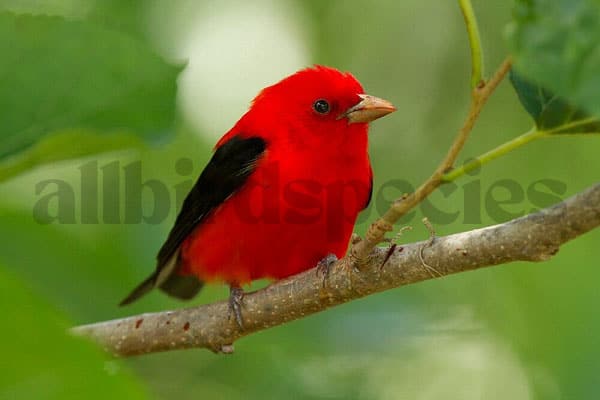
Description and Habitat
In spring and summer, male Scarlet Tanagers fill the eastern North American forests with their songs. These birds live in mature forests, where they look for food among the leaves. They like big, untouched forests best.
Diet and Behavior
Scarlet Tanagers eat insects, fruits, berries, and sometimes earthworms during the breeding season. They are active during the day but migrate at night. In late summer and fall, they join other songbirds to find food together.
2. House Finch (Haemorhous mexicanus)
The house finch is a small, vibrant bird seen often in North America. It has a red chest and head, making it a joy to watch. These birds have adjusted well to city and suburban life, becoming very common in the U.S.

They are about 5-6 inches long and weigh between 0.6-1.0 ounces. Their gray-brown body has dark streaks. The head and chest are bright red, sometimes looking more orange. Females are mostly brown with lighter underparts and less streaking.
House finches live in many places, from dry deserts to forests and grasslands. They can be found in the western U.S., southwestern Canada, Mexico, and even in the eastern U.S. and Hawaii, where they were introduced.
They eat seeds, buds, and fruits, loving sunflower, dandelion, and thistle seeds. They also visit bird feeders, eating nyjer and sunflower seeds.
3. Rose-breasted Grosbeak (Pheucticus ludovicianus)
The rose-breasted grosbeak is a bird with a unique look. Males have a black head and back, but their chest and belly are bright red. They also have a big, pinkish bill. Outside of the breeding season, they look less colorful.
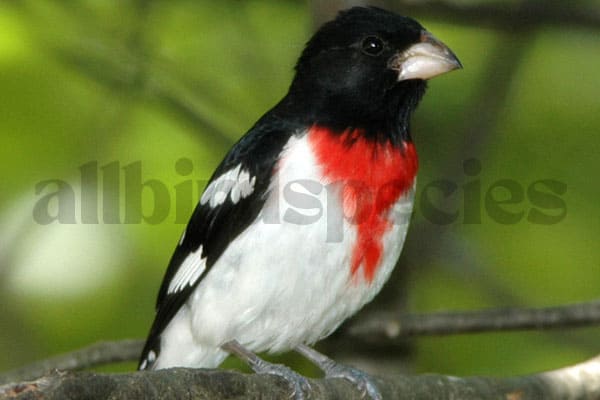
Females are different, with dark brown feathers on top and white, streaked feathers below. They have a white stripe over their eyes and white bars on their wings.
Physical Characteristics
Rose-breasted grosbeaks are a bit bigger than House Finches but smaller than American Robins. They stand out with their black, white, and red colors. Males show a red mark on their chest in the breeding season. Females and young birds look more subdued, with streaks on their feathers.
Range and Habitat
These birds live in southern and central Canada, and the eastern United States during summer. In winter, they go to Mexico, Central America, and northern South America. They like living near forests, woodlands, and water, like marshes and streams.
4. Scarlet Macaw (Ara macao)
Scarlet Macaw is a stunning parrot with bright red feathers. It stands out with its large size and unique look. It has blue wings, a blue rump, and a white face. It also has yellow wing patches, green borders, and a golden sheen under its wings.

Its lower beak is black, while the upper beak is whitish-grey. Its eyes are a light yellow color.
Appearance and Native Range
The Scarlet Macaw lives in the woodlands and forests of Central and northern South America. It loves places with big trees and water. Its bright colors and big size make it a favorite to see in the wild.
Diet and Habitat Preferences
These birds eat mostly fruit, seeds, and nuts. They also enjoy flowers and nectar sometimes. They can live in many places, from dense forests to dry areas. They just need to find their favorite foods and places to nest.
5. Red-breasted Meadowlark (Leistes militaris)
The red-breasted meadowlark, known as Leistes militaris, stands out with its bright look. Males show off a bright red chest, throat, and shoulders against their black bodies. Females have a calmer brown look with dark edges, streaks on the sides, and a buff underbelly.
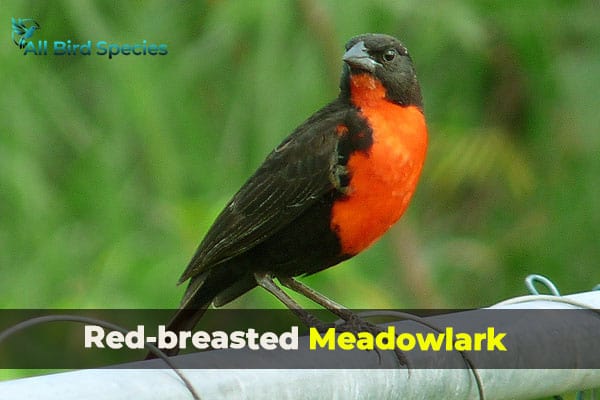
Red-breasted meadowlarks live in open areas like fields and farmlands. They eat mostly insects and seeds. Males sing in their territory, build nests on the ground, and sleep together with other birds. They lay 2 to 4 eggs that are reddish brown with cream spots.
This bird is found in Central and South America, from Costa Rica to Peru and Bolivia. It also lives in Trinidad, the Guianas, and Brazil. They are about 19 cm (7.5 in) long and weigh 40-48 g (1.4-1.7 oz). Watching them in their home, like large wet fields and grassy savannas, is a treat.
6. Vermilion Flycatcher (Pyrocephalus rubinus)
The vermilion flycatcher is a bird that catches the eye with its bright red feathers. The adult male has a stunning red chest, belly, and head, with a dark mask and brown back. The female looks different, with a grayish-brown top and a pale, streaked belly with a reddish tint.

Description and Range
This bird is medium-sized and has a sturdy build, standing tall with a long tail. It lives in many places, from the southwestern U.S. to Central and South America. Some birds move to Mexico for the winter.
Habitat and Behavior
The vermilion flycatcher loves open areas with bushes, like deserts, fields, and tropical forests. They spend a lot of time on high perches, like bushes and fences. Then, they quickly fly to catch bugs in the air. Their sounds, like pit pit pit pidddrrrreeedrr and ching-tink-a-le-tink, add to their charm.
7. Scarlet-breasted Flowerpecker (Prionochilus thoracicus)
The scarlet-breasted flowerpecker, known as Prionochilus thoracicus, is a bright bird in the Dicaeidae family. It has a bright red chest and throat, with a black border around it. Its body is black on top, with a red crown and a yellowish-green back.

Below, its belly and undertail are yellowish-green, and the underparts are whitish. This makes it stand out.
The female is less colorful, with a grey head and white throat. She has a yellow chest, white sides, and a brownish-yellow back. These birds live in forests and eat fruits, nectar, and sometimes insects.
These birds live in Indonesia, Brunei, Malaysia, and Thailand. They are key to the tropical ecosystem’s diversity. Their bright colors and unique eating habits make them interesting to watch.
8. Red-breasted Sapsucker (Sphyrapicus ruber)
The red-breasted sapsucker stands out with its bright red head and chest. It has a white patch right between its beak and eyes. Its blackish upper parts are covered in white spots, and its white rump makes it easy to spot.
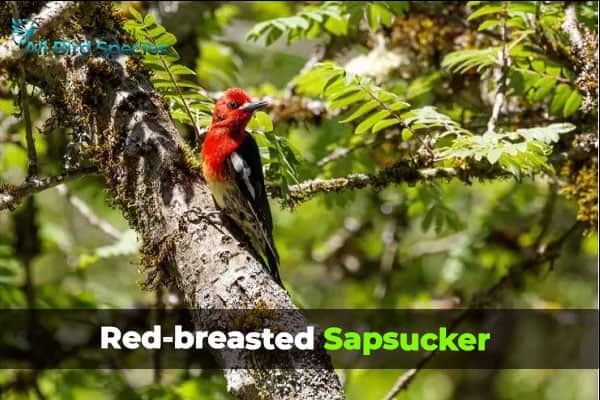
It also has a long white shoulder patch and greyish-white underparts with dark streaks. Sometimes, its belly shows a yellowish wash. The upper tail is white with black bars, adding to its unique look.
Identifying Features
These woodpeckers are a bit bigger than Downy Woodpeckers but smaller than Northern Flickers. There are two subspecies, the northern ruber with deeper red, and the southern daggetti with a bigger white stripe on the face. They are all a bit smaller in size.
Range and Habitat Preferences
Red-breasted sapsuckers live in the western parts of Canada, Alaska, Washington, Oregon, California, and Mexico’s western tip. In the summer, they like forests with some trees that lose their leaves, orchards, and young forests. In the winter, they move to lower places, like parks and suburbs, especially near the coast.
This woodpecker is special because of its unique look and actions. Knowing how to spot them and where they live helps us enjoy these amazing birds in nature.
9. Northern Cardinal (Cardinalis cardinalis)
The Northern Cardinal is a beloved bird in North America. It’s known for its bright red feathers, black masks, and unique beak. These birds are common in the United States and Mexico. They live from the east and center to the southwest, making them a favorite among backyard birdwatchers.

Appearance and Range
Male Northern Cardinals stand out with their bright red feathers and black masks. They also have red beaks. Females have a brown color with reddish wings, tails, and crests. Both have the same eye-catching features, but males are a bit bigger.
These birds live from Maine and Nebraska in the north to Florida and Texas in the south. They also live in parts of Mexico and northern Central America. But, they rarely go west of the Rocky Mountains, except in southern Arizona and New Mexico.
Habitat and Diet
Northern Cardinals live in many places like woodlands, fields, swamps, and even cities. They’ve adapted well to human-made environments, finding plenty of food and places to nest.
They eat seeds, insects, buds, and fruits. They crack open seeds with their strong beaks. Cardinals help their ecosystems by spreading seeds and pollinating plants as they forage.
10. Summer Tanager (Piranga rubra)

The Summer Tanager is a large tanager with a bright red plumage, including its chest, for males. Females range from pale yellow to bright orange all over. Both have darker wings, a pale beak, and dark eyes.
This bird migrates to the southeastern and southwestern United States, and northern Mexico for breeding. It spends the winter in central South America. Summer tanagers live in mature forests and woodlands, but can also be seen in parks and yards. They eat mostly insects, like wasps and bees, and sometimes spiders, fruit, and other insects.
Did you know the Summer Tanager is the only completely red bird in North America? These birds are not just beautiful; they also help control insect populations. They migrate to the middle of South America, with some flying an extra 890 km (553 mi) after reaching Panama.
The oldest Summer Tanager was a male found in Arizona in 2021, at least 11 years old. These birds are experts at catching bees and wasps in flight. They show off their amazing flying skills and hunting abilities.
Read More Birds Articles
| Woodpeckers in Ohio |
| How Long Do Wood Pigeons Live? |
| How Do Birds Mate: A Comprehensive FAQ Guide |
| African Finches ( ID Guide With Pictures) |
| Top 13 Birds Of Africa (ID Guide With Pictures) |
Final Thoughts:
Birds with red chests are uncommon but stand out as striking and captivating. This article has shown you 10 amazing birds in North America with this bold plumage. They come in various sizes and shades of red.
The Northern Cardinal and the Scarlet Macaw are just a few examples. These birds use their red chests to attract mates and protect their territory. The colors range from scarlet to rose to vermilion.
Learning about these birds helps us appreciate the diversity and beauty of the bird world. You might even spot some of these red-chested birds in your local parks or backyard. Exploring the world of birds with red chests is truly fascinating.

